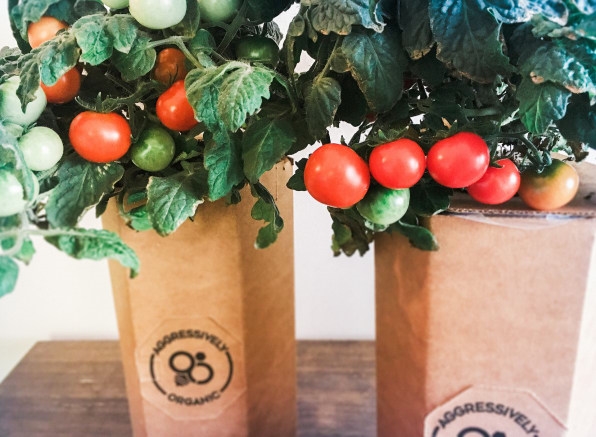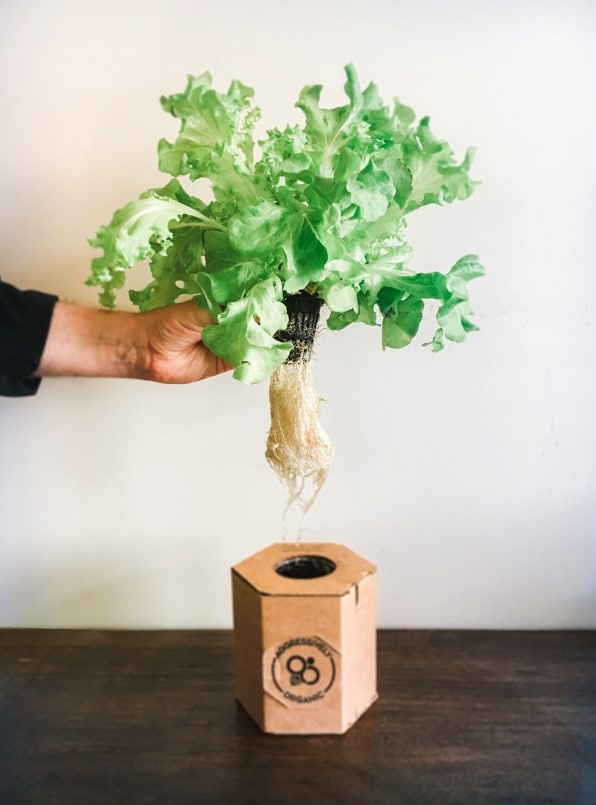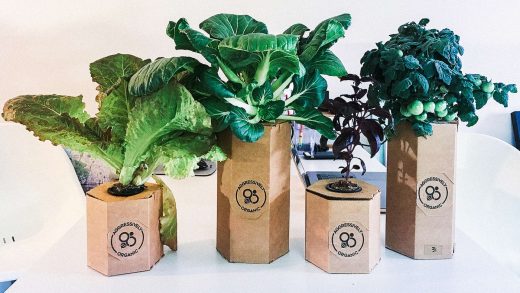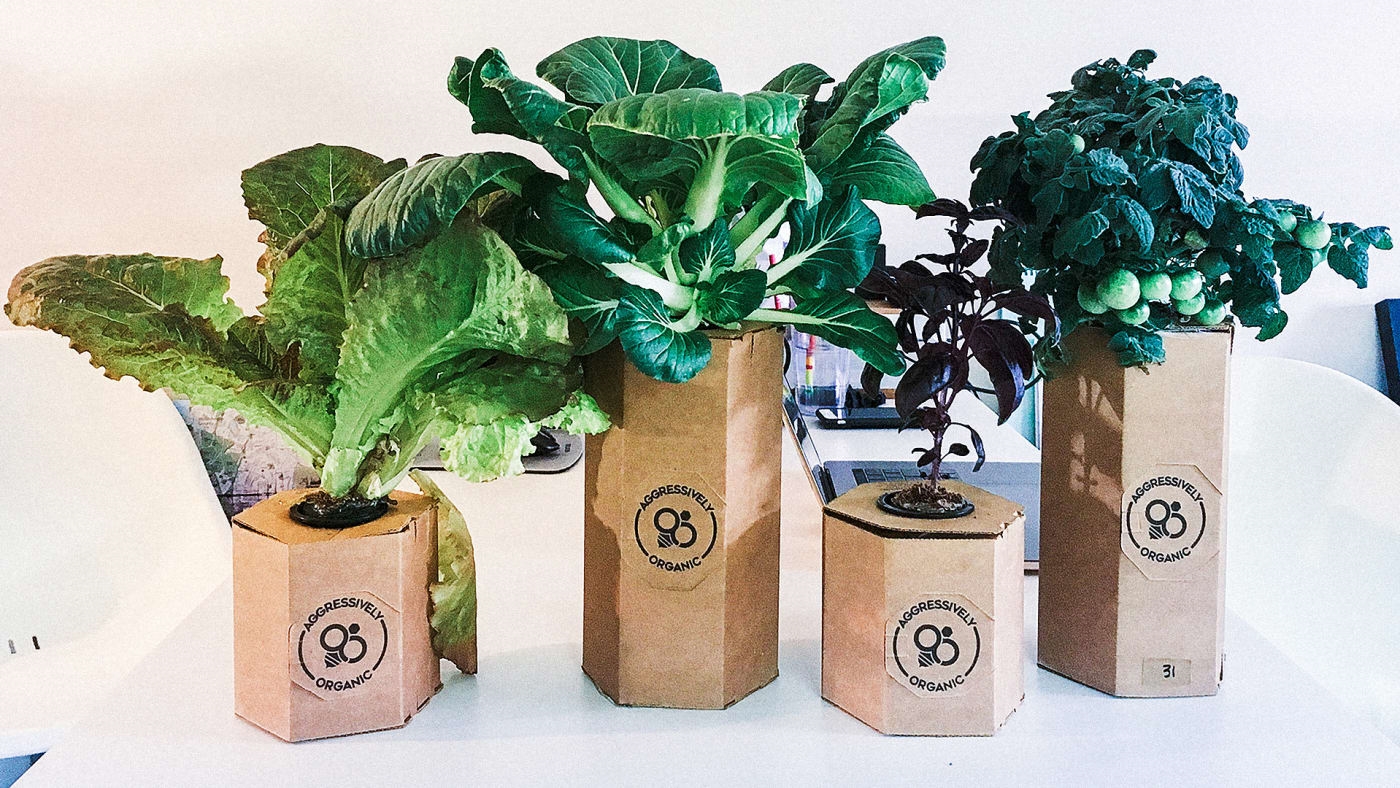These low-tech indoor gardens bring vegetables to your kitchen
While some indoor farming companies operate in sprawling buildings–like Aerofarms, with a 70,000-square foot, tech-filled farm inside a former steel mill in Newark, New Jersey–a small startup called Aggressively Organic is focused on increasing indoor farming one square foot at a time. The startup wants to make small kitchen gardens affordable enough to be accessible to everyone, growing kale or tomatoes that can begin to address food insecurity.
The company’s new kits, which will begin shipping to customers in August, come with seeds that someone can plant in a small pod made from coconut coir, a byproduct of making coconut water. After the plants sprout up, the pods get moved to small cardboard containers under lights that come with the system. The company claims that after the initial setup, the system holds in water well enough that it won’t need to be watered again for at least a month. It’s low-tech, unlike some similar systems with sensors that measure soil moisture and automatically water themselves.

“Typically hydroponic systems require pumps and air filters,” says Partlow. “Ours does not. It requires none of that. So that’s how you keep the cost down.” A set of nine hexagonal planters, which nestle together to save space on a counter or bookcase, along with all of the assorted parts of the system and 72 refills of the growth medium and seeds, is currently on pre-order at a sale price of $139; once the plants begin growing, they can be harvested continuously for months.

“We harvest off of a head of lettuce for three months or kale for us six months to a year,” says Partlow. (When leaves are taken off the plant, rather than cutting off the whole plant, the plant keeps growing.) Like an outdoor vegetable garden, it’s cheaper to use than buying organic produce at a grocery store, but because it’s inside, it can be used year-round in any climate. It’s also easier to maintain, uses less water, and doesn’t require the use of pesticides. The company believes that a network of its indoor gardens throughout households would also make the food system more resilient; rather than growing lettuce in drought-prone Arizona and California, where nearly all of it is grown today, it could be grown in the kitchens where it’s eaten.
Partlow aims to make the systems available to everyone, particularly those who are food insecure, though even a price of $139 may be out of reach of someone who relies on food stamps. The company is working on a new service model that would supply customers with a six-pack of plants that are already ready for harvest, and let them exchange the plants as many as 24 times a month, for a cost of around $50, which could be paid either in installments or through SNAP, the government food assistance program.
Growing food at home could also improve nutrition–both because fruits and vegetables lose nutrients as they spend time in long supply chains and because simply having kale visible on your counter may mean you eat more of it.
“What we found is that if it’s available and you don’t have to go to the store to get it, our diets start to resemble more of what our natural diets as human beings have always been, which is we graze,” says Partlow. “Our habits actually change… you eat more vegetables than you would now because it’s available. It takes less time to plant, grow and maintain these things than it takes most people to get dressed and get ready to go to the grocery store and find a parking spot.”
(18)



